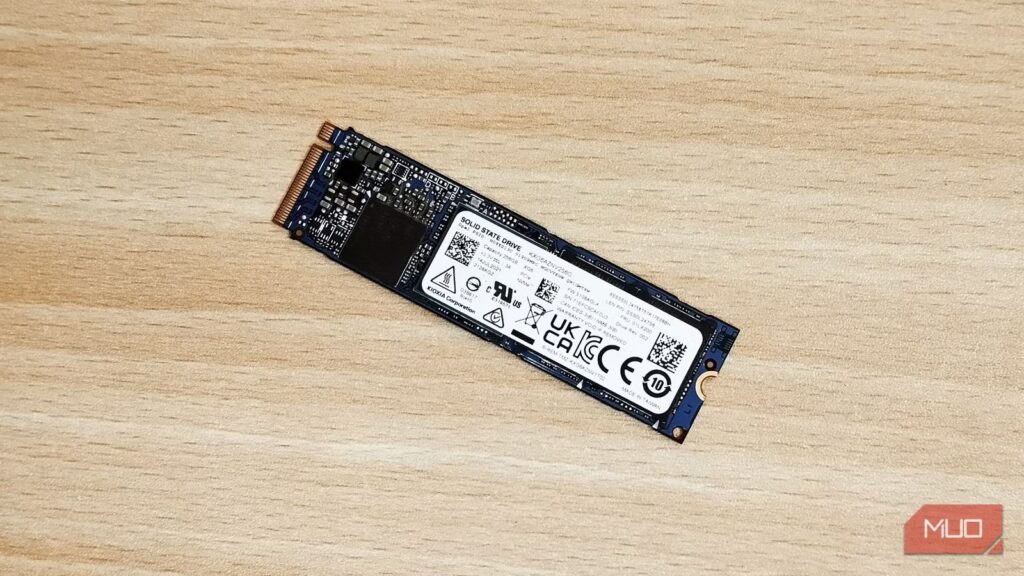Plenty of people have defragmentation enabled as part of routine PC maintenance, and years ago, that was solid advice. When hard disk drives (HDDs) were standard, defragmentation could speed up your computer by reorganizing scattered files across the spinning disk.
But if you’re running a PC with a solid-state drive (SSD), defragmenting isn’t just unnecessary—it can harm your drive. SSDs work fundamentally differently from HDDs. The old maintenance wisdom doesn’t apply anymore.
What is defragmentation?
HDDs scatter your files all over the place
When you save a file to an HDD, it doesn’t always land in one neat spot. The drive stores pieces of that file wherever it finds available space. That space can sometimes be scattered across different physical locations on the spinning platter. This is fragmentation.
Over time, as you add, delete, and modify files, the HDD becomes increasingly fragmented. The read/write head has to jump around the disk to collect all the pieces of a single file, which slows down access times. Defragmentation reorganizes these scattered file fragments back into contiguous blocks. The tool moves file pieces around, so each file sits in one continuous location, reducing the distance the read/write head travels. This improves performance on HDDs because physical movement takes time.
That mechanical limitation is the entire reason defragmentation existed. When your storage device relies on moving parts to read data, having files organized sequentially makes a measurable difference. But SSDs don’t work this way at all.
Here’s why SSDs make defragmenting obsolete and harmful
Flash storage doesn’t care where your files sit
Screenshot by Yasir Mahmood
SSD uses flash memory instead of spinning platters. It can access any storage cell in the same amount of time, regardless of its location, so fragmentation doesn’t slow it down. In fact, defragmentation offers zero performance benefit on SSDs. Your files could be scattered across the drive, and you wouldn’t notice any difference in speed.
Defragmentation actively harms SSDs. Flash memory cells can only handle a limited number of write cycles before they wear out. Each time you defragment, you’re forcing the drive to rewrite massive amounts of data unnecessarily. This burns through those write cycles for no gain whatsoever.
SSDs include wear-leveling algorithms that distribute writes evenly across all cells to maximize lifespan. Defragmentation interferes with this process by triggering excessive writes to specific areas. If you want to extend your SSD’s life, there are best practices to prevent it from dying prematurely, rather than running a tool designed for completely different hardware.
Windows has changed how it handles drive maintenance
It now runs TRIM on SSDs instead
Screenshot by Yasir Mahmood
If defragmenting SSDs is harmful, why does Windows still include a defragmentation tool? The answer is that it’s not quite what it used to be.
Microsoft renamed the tool to “Optimize Drives”. More importantly, it now detects your drive type automatically and applies different maintenance based on what you have installed. When you run optimization on an SSD, Windows doesn’t defragment anything. Instead, it executes a TRIM command, which is specifically designed for flash storage.
Here’s what TRIM actually does: when you delete a file, your OS marks those storage blocks as available, but doesn’t immediately erase them. On an HDD, this isn’t a problem—the drive can overwrite old data instantly. But SSDs must clear a block before writing new data to it, which slows down write operations over time. TRIM tells the SSD which blocks contain deleted data so it can erase them during idle periods. This way, when you need to write new files, the drive has clean blocks ready to go without clearing old data first. The tradeoff is that trimmed data becomes unrecoverable—but that’s the entire point.
Windows schedules this optimization weekly by default, which works fine for most people. The tool includes “defragment” in its name because some people still use HDDs in different ways alongside SSDs, but it applies the correct maintenance for each drive type.
Let the OS do the work for you
Years ago, third-party tools like Defraggler offered better control over the defragmentation process than Windows’ built-in option. Some people still download these programs as they remember them being useful.
But there’s no reason to use them anymore, especially for SSDs. Defraggler and similar tools were designed for an era when Windows didn’t handle SSDs intelligently—that hasn’t been true since Windows 8. These programs also haven’t kept pace with modern storage technology. Defraggler’s interface still shows Windows 7-era screenshots, which means the company behind it clearly no longer prioritizes it.
If you have an SSD, let Windows handle optimization on its own schedule. There’s nothing a third-party tool can do that Windows doesn’t already do correctly. And if you still have an HDD in your system, Windows will defragment that properly too. Save yourself the download and disk space.

